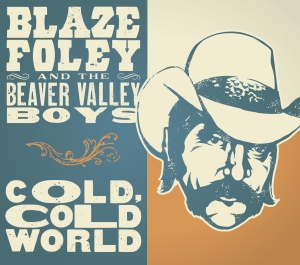
Scroll down to listen to the entire album on Spotify
In the early twentieth century, the barrier between “blues” and “not blues” was permeable. There was fluidity to understanding what constituted the genre such that WC Handy, Louis Armstrong, and Bukka White could all play blues and have it sound different. This flexibility allowed the genre to flourish, even as the definition of the genre became diffuse so quickly that the blues trend quickly exhausted itself.
Although the 60s blues-rock wave revivified the genre, it also, I think, is responsible for the blues’ current ossified state. In order to bring the blues back out of the margins, Eric Clapton and co. pushed the label to denote something very specific: twelve bar forms in guitar-friendly keys like E and A, with extended solos in minor pentatonic. This has been the dominant paradigm in the blues since the late 60s, and even the periodically lauded “saviors of blues music” (Stevie Ray Vaughan in the ‘80s, Kenny Wayne Shepherd in the ‘90s, and Joe Bonamassa in the 2010s,) do little more than reheat licks so old they’ve got freezer burn on them.
The blues has, by and large, become boring. If the genre is going to survive, listeners and musicians need to look back to the music’s initial, encompassing definition. We must embrace new chord progressions, new arrangements, and new perspectives, not just increasingly crusty old men wringing another note from a guitar. Blues is universal. Let’s give it a chance to be that again.
Whew, ok.
Bernard Adamus is exactly the kind of artist suited to take blues forward. He’s French-Canadian and sings almost entirely in a thick Québecois patois, but this is incidental because the feelings that saturate his 2009 debut Brun are unquestionably the blues in all its forms, from truly dejected to drunkenly indifferent and gleefully self-deprecating.
As the first bone-shaking guitar chord comes in at the 0:15 second mark in the opener “Cauchemar de Course,” this all shifts into focus. Yes, there are some elements here in common with that the most hackneyed blues songs—it’s in E minor, for example, and there is technically a guitar solo. But there’s so much more that’s peculiar. A trombone provides the bottom end, there’s no normal drum set, and the song’s chord structure totally ignores the IV chord in favor of a demonic carousel powered by the I and V chords alone. The atmosphere is one of undeniable dread; the galloping of at least two out of Four Horsemen. The same feeling motivates Skip James in “Devil Got My Woman.”
“La Question À 100 Piasses” sits in a similar raw emotional space, evident in Adamus’ vibrato and sloppy vocal control, at times reminiscent of Professor Longhair. But we’re even further afield in this track than we were on the opener. The drummer is playing a breakbeat, and most of Adamus’ lyrics are, well, rapped. Hip-hop/blues crossover is logical: both are highly vernacular forms with repetitive musical structures, one from the beginning of the twentieth century, and one from the end of it. (John Lee Hooker’s talking blues and A Tribe Called Quest are less far removed than we might think.) Adamus isn’t breaking ground here, but what’s remarkable is that this delivery doesn’t sound gimmicky, unlike other artists who employ the technique (see: G. Love). Adamus crams so many words into the bar that he resorts to this delivery only out of need—because of the narrator’s paranoia or overactive brain or sense that he must share all of this information while he still can.
The excellent “Le fou de l’ile” veers even further into this territory, with beatboxing and a repeated slide guitar figure. Together these elements call to mind Beck’s “Loser” and Ben Harper’s “Steal My Kisses,” although Adamus likely has more in common with Beck than Harper. Lyrically, this track also features a uniquely Canadian hybrid of English and French, and Adamus freely switches between the two languages for emphasis or to make rhymes fit. These songs aren’t the blues as most listeners know them, and yet, they can’t be anything else.
When Adamus does revert to the forms and structures that sound most like the blues we’ve come to accept, he holds his own with the best of contemporary interpreters. On songs like “Les Raisons” and “Acapulco” Adamus’ grit and slightly theatrical intonation convey a wry weariness, particularly on lines like “Mais bon, on a toute nos raisons” (“well, I guess we all have our reasons”). In terms of his vocal prowess, I’d say only Mike Mattison surpasses him on the contemporary scene.
Instrumentally, these more typical numbers neatly sidestep the 1960s influence of British players and even electric Chicago blues by sticking to resonator guitar, pianos, and brass, restoring a sense of warmth and intimacy to the blues. In the 60s, that feeling got lost at Budokan, Royal Albert Hall, and sports arenas across the planet, as large venues made sounds increasingly sterile. It’s not that the blues must be an intimate music, but it should have the option, and Adamus restores a sense of scale with these songs, even (particularly?) in the nonsense numbers “Le Bol” and “…De Toilette” which feature off-key group vocals and a fair amount of fumbling.
Adamus brings variety back to a genre that for the better part of half a century has been rigidly defined. Although he’s not the only one leading the charge for a more encompassing definition of the blues, he personifies the main tenants of what the blues will need to move forward as a living art form. He freely hybridizes, allows his music to have a sense of scale, minimizes solos and puts the focus back on a feeling and on a groove. And although Canada is maybe not the most foreign place in the world for an American listener, Adamus still proves an important point: this is music that can be made anywhere by anyone, and that’s where the blues is most at home.


 Let me be clear about something: I am a Yankee. I have not spent very much time south of the Mason-Dixon line, and certainly not in summer. I therefore have no great experience with the kind of syrupy, incapacitating heat that forces you to stay on your front porch, immobile and slowly sweating as the sun rises and falls.
Let me be clear about something: I am a Yankee. I have not spent very much time south of the Mason-Dixon line, and certainly not in summer. I therefore have no great experience with the kind of syrupy, incapacitating heat that forces you to stay on your front porch, immobile and slowly sweating as the sun rises and falls.


